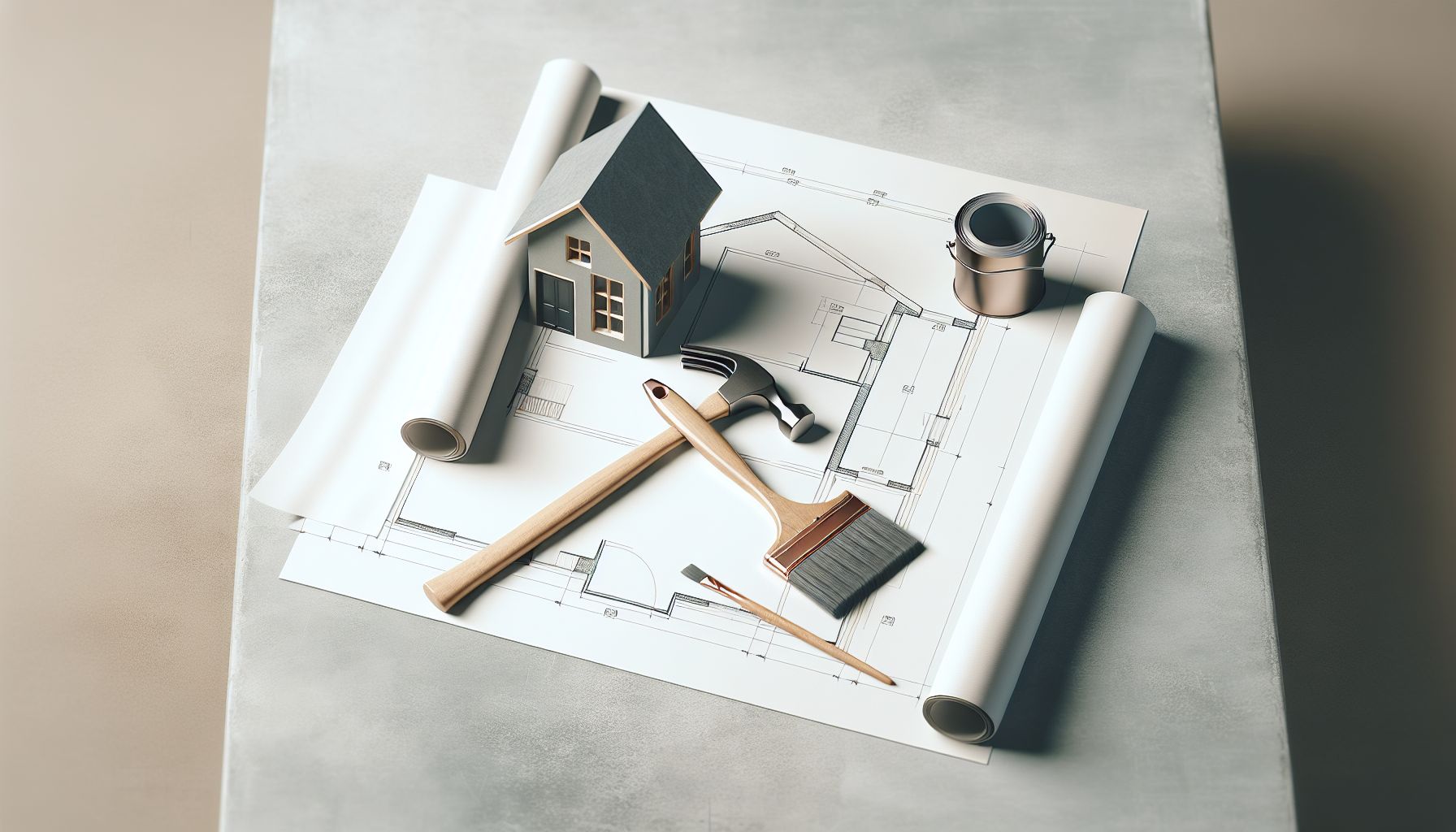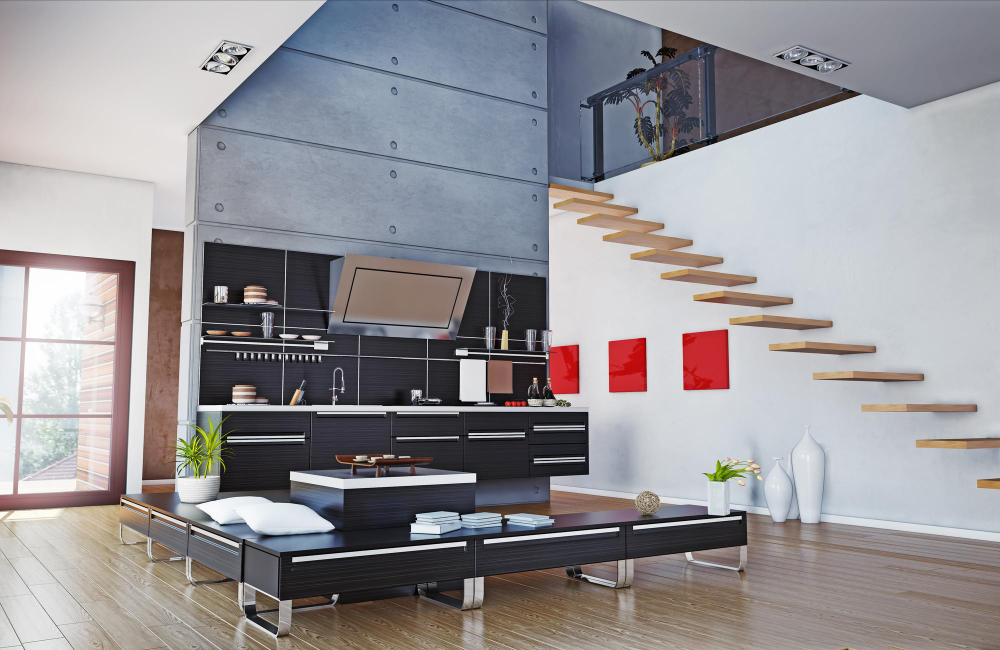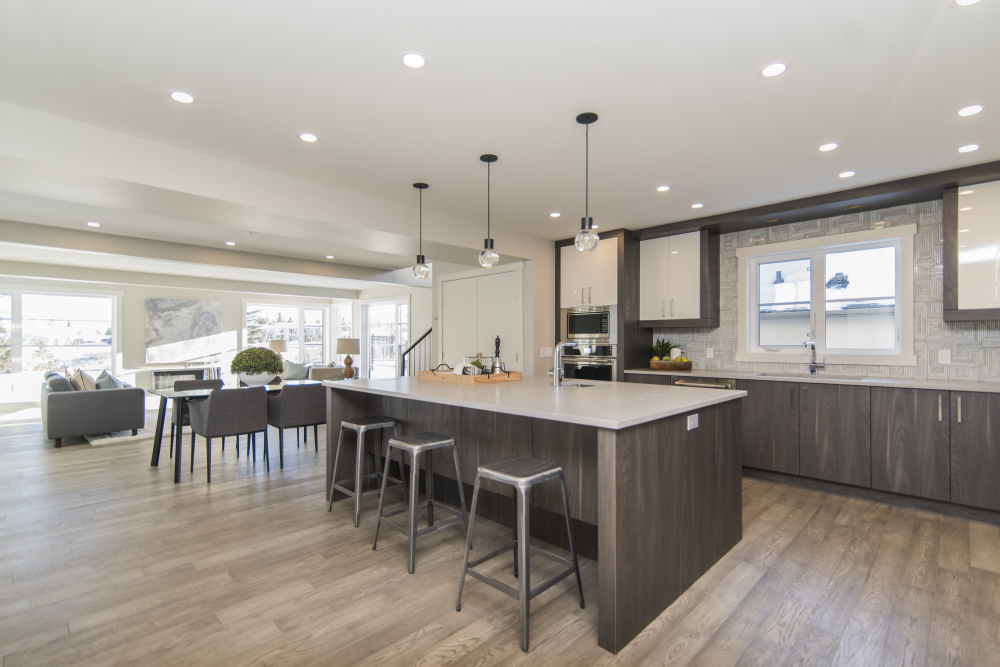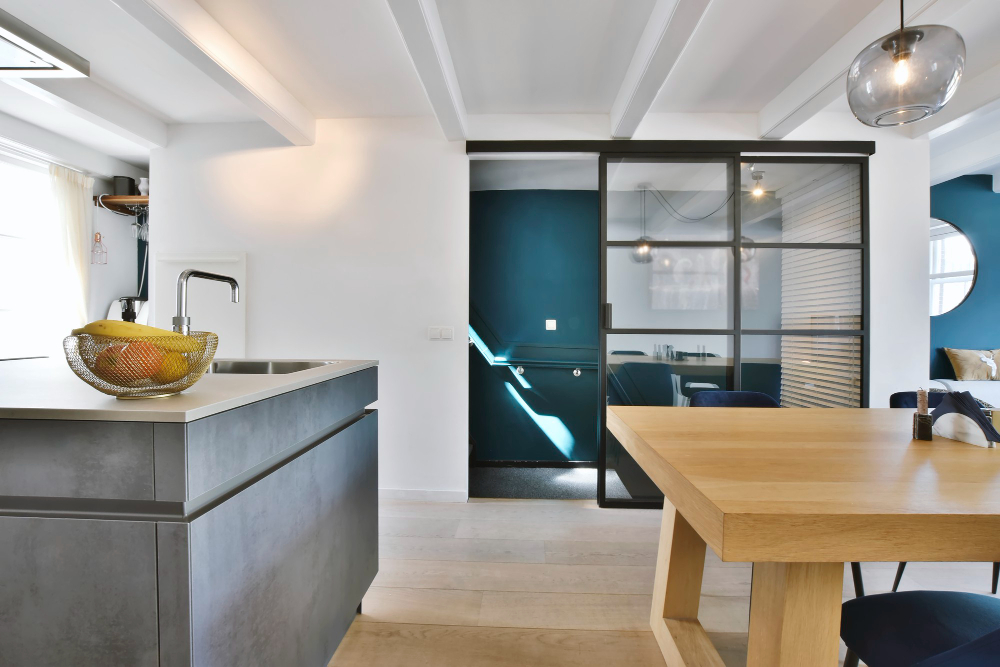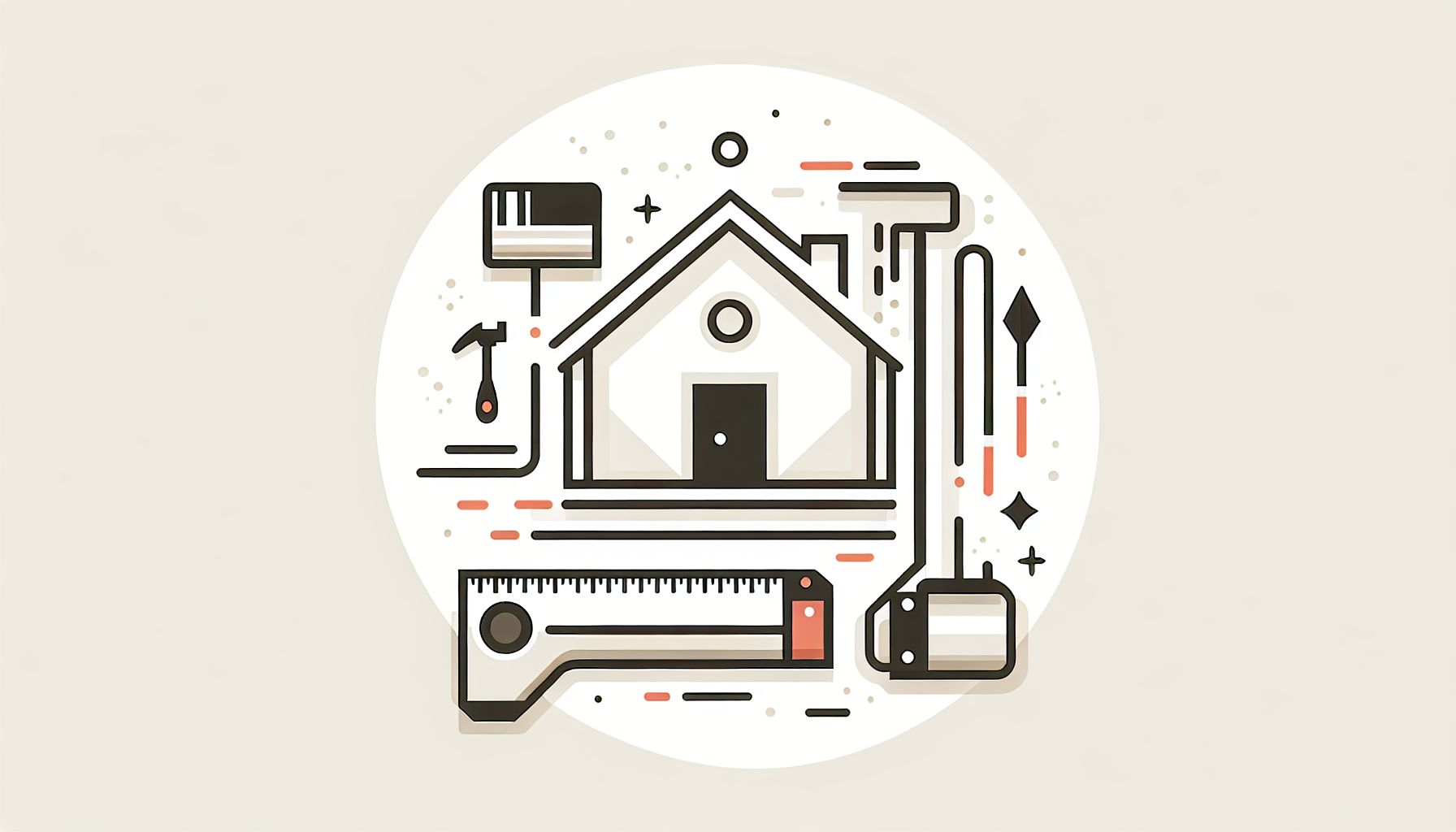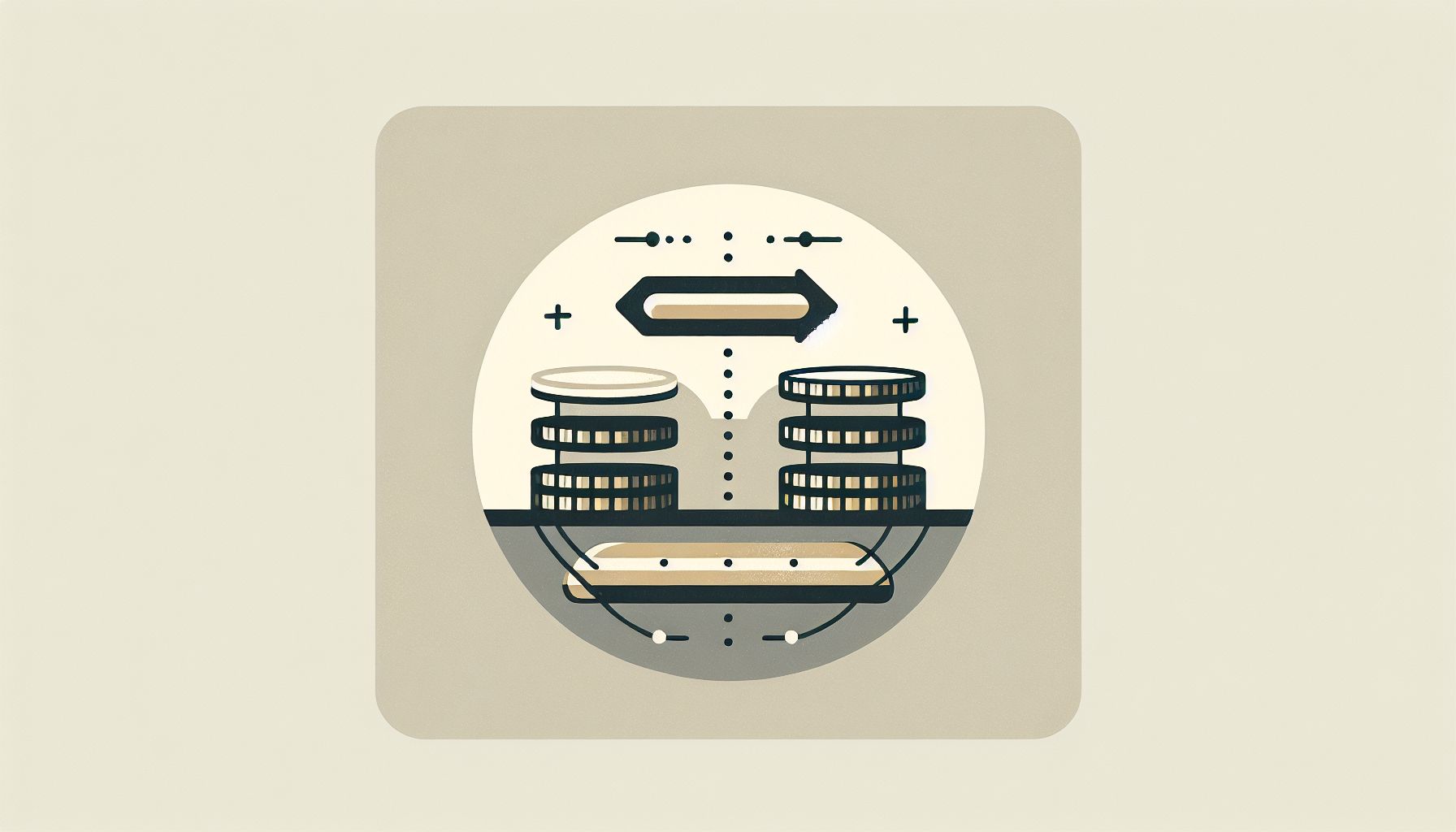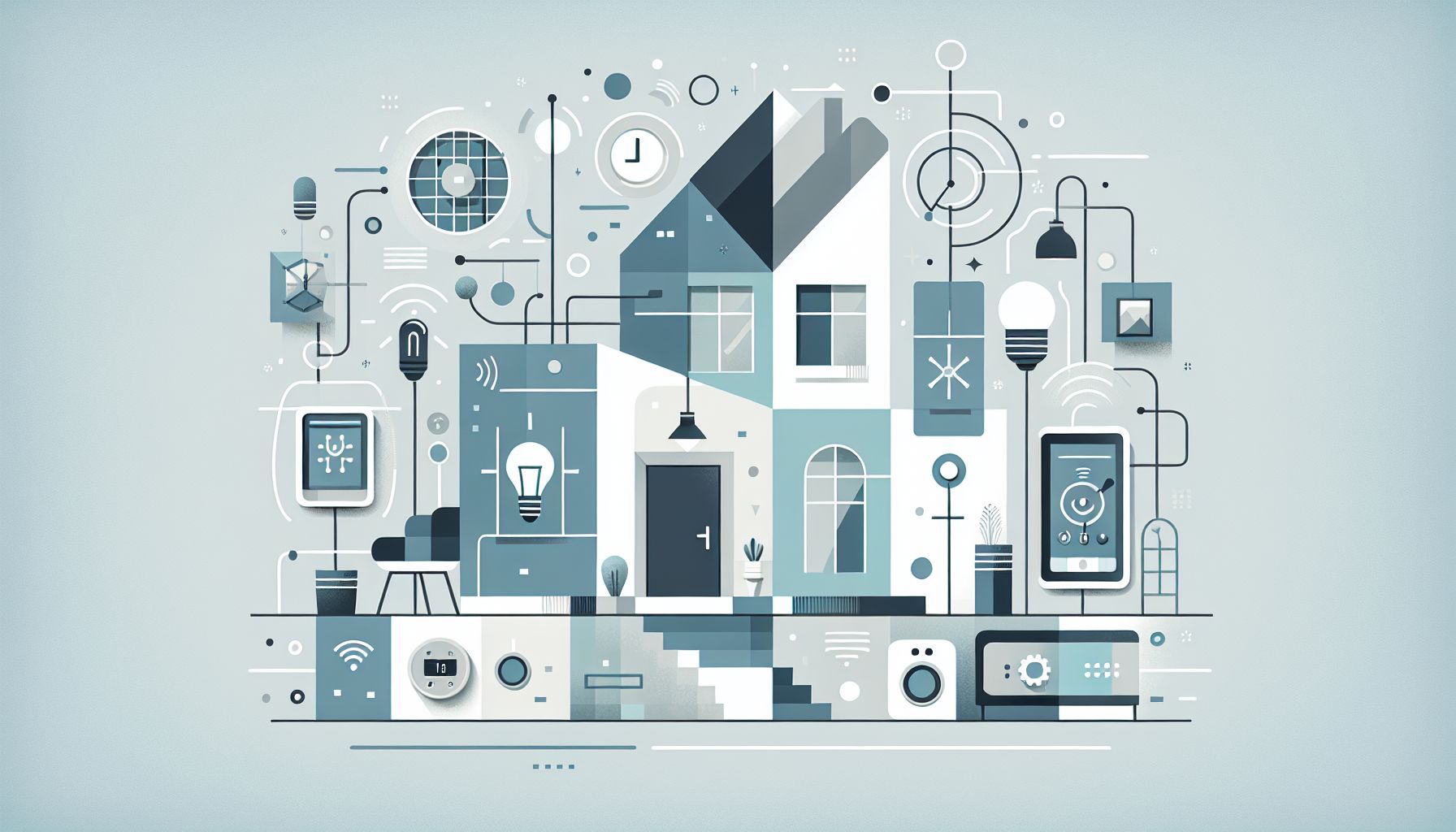Creating a Modern Home: Top Renovation Ideas for LA Residents
Introduction to Modern Home Renovations in Los Angeles
Renovating homes has become a popular trend in Los Angeles. With its unique blend of cultural heritage and contemporary style, LA houses provide the ideal canvas for homeowners looking to revamp their living spaces. As a vibrant city, LA presents exciting opportunities for homeowners and investors. In this article, we’ll explore the allure of modernizing homes in Los Angeles, understand local architectural styles, and unveil the benefits of undertaking such a project amidst the dynamic LA housing market.
The Appeal of Modernizing Your LA Home
Modernizing your home can greatly enhance its appeal, both aesthetically and functionally. In a city like Los Angeles, with its eclectic mix of cultures and styles, a home renovation can be a way to express personal taste while also increasing market value.
Many homeowners are drawn to the idea of transforming their spaces into more contemporary settings, which often means adding sleek finishes, integrating advanced technology, and optimizing the use of space and light. The appeal also lies in the potential return on investment. Real estate experts note that a well-executed renovation can significantly elevate the property’s value, offering financial benefits alongside aesthetic improvements.
Understanding Local Architectural Styles
Los Angeles is known for its diverse architectural styles, from classic Spanish Colonial homes to sleek Mid-Century Modern masterpieces. Understanding these styles can help homeowners make informed decisions about their renovations.
Spanish Colonial homes, for instance, often feature stucco walls, red-tiled roofs, and arched doorways. Modernizing these homes can involve blending traditional elements with contemporary materials. Meanwhile, Mid-Century Modern homes, with their emphasis on simplicity and integration with nature, might benefit from enhancements that focus on open spaces and abundant, well-placed glass.
Appreciating these architectural nuances not only informs the renovation process but also ensures that the updates complement the neighborhood’s character and history of Modern Home.
Benefits of Renovating in the LA Housing Market
The LA housing market is competitive, and a well-planned renovation can offer distinct advantages. Renovating a home can make it more attractive to potential buyers, enabling homeowners to command a higher market price when the time comes to sell.
Furthermore, updated homes typically require less maintenance and afford better energy efficiency, leading to long-term cost savings. With environmental concerns on the rise, many buyers specifically look for homes that offer eco-friendly features, making green upgrades a valuable component of any renovation strategy.
Embracing Open Concept Living Spaces
In recent years, open-concept living has become a favored style for homeowners looking to create expansive and functional living areas. Removing walls and partitions can transform cramped, divided rooms into a cohesive space that beautifully integrates living, dining, and kitchen areas.
Removing Barriers: Walls and Partitions
One of the keys to achieving an open-concept feel is the careful removal of interior walls. Not only does this create more space, but it also fosters a social atmosphere that’s perfect for entertaining.
However, it’s crucial to approach this task thoughtfully. Consulting with an architect or structural engineer ensures that the removal of walls doesn’t compromise the home’s structural integrity. Strategic planning can transform the limitations of older homes into opportunities for creating light-filled, expansive areas that accommodate modern living Modern Home.
Maximizing Space with Minimalist Design
A minimalist design emphasizes simplicity and function, making even the smallest spaces feel bigger. By incorporating clean lines, neutral color palettes, and streamlined furniture, homeowners can maximize their living areas without compromising on style.
This approach often includes clever storage solutions that keep clutter out of sight and out of mind. Built-in shelving, multi-purpose furniture, and concealed storage options help sustain a tidy and serene environment—highly sought after in busy cosmopolitan life Modern Home.
Incorporating Natural Light through Windows and Skylights
Natural light is a vital element in open-concept designs, and increasing its presence in a home can have numerous benefits. Expansive windows and skylights not only brighten the interior but also connect the indoor space with the outdoors, expanding the perception of room size.
In LA’s sunny climate, taking advantage of natural light can significantly reduce electricity usage, promoting energy efficiency. Thoughtful placement of windows and skylights ensures that each space is welcoming and light-filled, while also offering stunning views of the cityscape or Modern Home.
Sustainable and Eco-Friendly Upgrades
Sustainability is at the forefront of modern home renovations. Homeowners are increasingly aware of the environmental impact of their choices and are looking for ways to reduce their carbon footprint while saving on utility costs Modern Home.
Installing Energy-Efficient Appliances
Modernizing your home with energy-efficient appliances is one of the simplest ways to reduce energy consumption. From smart refrigerators that optimize cooling to washers that use less water, these appliances are designed to minimize waste and maximize efficiency.
Choosing products with high Energy Star ratings ensures that appliances meet rigorous standards for performance and sustainability, offering reductions in both energy use and utility bills Modern Home.
Utilizing Solar Power Solutions
With more than 280 sunny days a year, Los Angeles is an ideal locale for harnessing solar energy. Solar panels can significantly cut down on electricity costs and benefit the environment by reducing dependence on non-renewable energy sources.
Investing in solar power may require an initial outlay, but it pays off in the long run through tax incentives, reduced utility bills, and increased home value. As sustainability becomes more ingrained in consumer behavior, having a solar-equipped home is increasingly a selling point Modern Home.
Selecting Sustainable Building Materials
Choosing sustainable materials is a cornerstone of eco-friendly renovations. From reclaimed wood and bamboo flooring to low-VOC paints and recycled steel, there are various options that reduce environmental harm Modern Home .
These materials often have the added benefits of durability and aesthetic appeal. For instance, heat-treated wood products can mimic exotic hardwoods, offering beauty and resilience without contributing to deforestation Modern Home.
Integrating Smart Home Technology
In today’s connected world, integrating smart technology into homes can provide convenience, security, and cost savings. Los Angeles homeowners are increasingly interested in upgrading their homes with technology that adapts to their lifestyles.
Upgrading to Smart Lighting Systems
Smart lighting systems offer customizable solutions for every room, enhancing both functionality and ambiance. These systems can be controlled remotely, scheduled according to preferences, and adjusted based on activity or mood.
Beyond convenience, smart lighting can also contribute to energy savings. Advanced systems automatically dim or turn off lights when not in use, optimizing energy consumption. Such features are particularly attractive in a city like LA, where both sustainability and technological sophistication are prized.
Implementing Intelligent Climate Control
Intelligent climate control systems provide optimal comfort while reducing energy use. With smart thermostats, homeowners can set temperatures based on daily routines or weather patterns, ensuring the home is energy-efficient while aligning with personal preferences.
These systems detect occupancy, learn from user behavior, and adjust heating, ventilation, and air conditioning automatically, delivering savings on utility bills. The ability to monitor and control home environments from anywhere provides an added layer of convenience for the tech-savvy LA homeowner Modern Home.
Enhancing Security with Smart Devices
Safety is paramount for any home, and smart security solutions can offer greater peace of mind. From cameras and doorbell systems with remote access to smart locks and motion sensors, these devices keep properties secure in a sophisticated manner.
According to recent studies, homes with smart security systems are less likely to be targeted by intruders. This added security measure is not only beneficial for homeowners but also appeals to potential buyers in the future.
Enhancing Outdoor Living Areas
Los Angeles boasts a mild climate year-round, making outdoor living spaces an essential part of any home renovation project. Updating these areas can significantly enhance property enjoyment and value.
Designing Modern Patios and Decks
Modern patios and decks have transcended the traditional lawn chair setup, evolving into sophisticated extensions of indoor living areas. By using quality materials and integrating features like fire pits, outdoor kitchens, and comfortable seating, these spaces invite relaxation and entertainment.
Consider durable materials like composite decking, which is resistant to the elements and requires less maintenance than natural wood. This choice enhances the longevity and visual appeal of outdoor spaces, fitting the laid-back LA lifestyle.
Landscaping with Drought-Resistant Plants
Los Angeles often experiences water shortages, which makes drought-resistant landscaping both practical and sustainable. Homeowners can choose from a variety of native plants that thrive in dry conditions without sacrificing beauty.
Xeriscaping, a type of landscaping that reduces the need for irrigation, complements the natural environment and lowers water consumption. With options ranging from succulents to California poppies, homeowners can create vibrant gardens that respect local water restrictions.
Creating Indoor-Outdoor Flow with Sliding Doors
A seamless flow between indoor and outdoor areas is a hallmark of modern home design. Sliding doors create expansive openings that merge living areas with gardens or patios, offering flexibility and visual appeal.
These doors not only enhance the aesthetic but also improve air circulation and maximize natural light. When open, they blur the boundaries between interior and exterior spaces, promoting a fluid lifestyle that embraces LA’s sunny climate.
Incorporating Los Angeles Design Trends
Staying current with design trends is key to ensuring that a renovation project meets aesthetic and functional goals. In LA, there’s a strong emphasis on blending historical influences with contemporary sensibilities.
Blending Mid-Century and Contemporary Styles
Mid-Century Modern design is a cherished part of LA’s architectural identity. Combining this style with contemporary touches can result in spaces that feel both timeless and trendy. Think clean lines, organic shapes, and the careful use of bold colors.
Balancing old and new elements can create a unique ambiance, one that resonates with both nostalgia and innovation. This synthesis appeals to homeowners looking for spaces that reflect character while maintaining modern standards.
Using Locally Sourced Art and Decor
Incorporating locally sourced art and decor is one way to add personal and regional flavor to a home. LA has a rich artistic community, and choosing items from local artists not only supports the community but also ensures that the decor is one-of-a-kind.
Local art can range from paintings to craft furnishings, all contributing to an environment that’s intimately tied to its surroundings. Moreover, these items often tell a story, adding layers of meaning and context to the living space.
Customizing Spaces with Personalized Touches
Personalization is a final, crucial step in any renovation project. Tailoring spaces to reflect the homeowner’s tastes and lifestyle ensures satisfaction and a lasting emotional connection to the home.
This might include custom cabinetry, unique finishes, or bespoke furnishings that speak to individual preferences. Personalized design choices ensure that the home is more than just a space—it’s a sanctuary.
As you embark on your renovation journey in Los Angeles, remember that each decision contributes to creating a home that’s not only beautiful and functional but also sustainable and connected. At Flat rate, we’re passionate about helping businesses and homeowners alike realize their visions. Whether you’re looking to modernize your website or your home, we’re here to guide you every step of the way. Explore more about our services at Flatrate and see how we can assist you in taking your projects to the next level.
Call to Action: Ready to start your renovation project or need help with creating an engaging online presence? Contact Flat Rate today and let us help you achieve your goals. Let’s build a brighter future together!
Quick Guide: What Is Flat-Rate Remodeling? Benefits, Pricing, and Hiring Tips Explained
Understanding Flat-Rate Remodeling
Definition and Key Features
Flat-rate remodeling is a pricing model where the total cost of a remodeling project is agreed upon before the work begins. This model outlines a set fee for the entire project rather than charging for every hour worked. Key features of flat-rate remodeling include a clearly defined project scope, which means that all tasks are specified upfront. This model offers clarity and transparency, allowing both the contractor and client to understand the expected outcomes without any hidden charges or unexpected surprises during the completion of the project.
History and Market Trends
The concept of flat-rate pricing in remodeling has gained traction as consumers increasingly look for ways to manage expenses more effectively. Historically, the remodeling industry relied heavily on hourly billing. However, in the past few decades, there has been a notable shift towards predetermined pricing. This trend is driven by homeowners seeking predictability and transparency in project costs. As the economy continues to fluctuate, many are opting for the certainty provided by flat-rate agreements, making it a popular choice among both contractors looking to simplify their billing processes and homeowners wanting to avoid unexpected costs.
Common Remodeling Services Covered
Flat-rate remodeling typically covers a range of services. These can include kitchen and bathroom remodels, flooring installation, painting, and even home additions. Essentially, any remodeling task that can be defined with clear boundaries and expected outcomes can potentially be priced on a flat-rate basis. This approach works well for projects where the scope can be precisely determined and any variations can be anticipated and outlined in the contract from the start.
Benefits of Flat-Rate Remodeling
Predictable Project Costs
One of the most significant advantages of flat-rate remodeling is the financial predictability it provides. Clients know the total cost upfront, which aids in budget planning and reduces the likelihood of financial stress. This predictability is particularly beneficial in preventing cost overruns and ensuring that the set budget aligns with the homeowner’s financial capabilities. It allows clients to allocate funds with confidence and prioritize other home improvements or investments.
Streamlined Contractor Agreements
Flat-rate remodeling also simplifies the relationship between contractors and clients. With a fixed price, the terms of the contract are straightforward and easier to negotiate. Both parties benefit from a well-defined agreement, reducing misunderstandings. Contractors, in particular, find it easier to manage project timelines and resource allocation when the scope and costs are predefined. This streamlined approach facilitates smoother project execution and enhances client satisfaction.
Time Efficiency and Project Timelines
Flat-rate remodeling can often lead to more efficient use of time. Because the cost does not vary based on hours worked, contractors are incentivized to complete projects efficiently without compromising on quality. This efficiency tends to reduce the overall project timeframe, resulting in a quicker turnaround for homeowners eager to enjoy their revamped spaces. This model allows for better scheduling and can lead to improved time management for all parties involved.
How Flat-Rate Pricing Works
Estimating Project Scope and Budget
The first step in flat-rate remodeling is accurately estimating the project scope and budget. During this phase, contractors assess the tasks involved, materials needed, and the project’s complexity. They then provide clients with a comprehensive quote that reflects the total cost. This assessment minimizes the risks of unexpected expenses popping up later in the process and allows both clients and contractors to start the project on the same page.
Components of a Flat-Rate Proposal
A flat-rate remodeling proposal typically includes several key components. These comprise detailed work descriptions, a timeline for project completion, and clear payment terms. Importantly, it also outlines any potential deviations that might incur additional costs, such as unforeseen structural issues or changes in project scope at the client’s request. Transparency in these proposals is critical to maintaining trust and cooperation between the client and the contractor.
Payment Schedules and Milestones
Once the total cost and scope have been agreed upon, a payment schedule is often established. This schedule is typically divided into milestones, ensuring payments are made as various stages of the project are completed. For example, an initial deposit might be required, followed by further payments at different phases of the project, such as completion of demolition, rough-in inspections, and final touches. This structure helps maintain a steady cash flow for contractors while giving clients a sense of control and the assurance that work is progressing.
Flat-Rate vs. Hourly Remodeling: A Comparison
Cost Transparency and Risk Management
Flat-rate and hourly remodeling each offer distinct advantages. Flat-rate provides immediate cost transparency and manages the financial risk by ensuring clients aren’t paying for inefficiencies. Hourly billing can lead to costs spiraling beyond initial expectations, creating stress and potential disputes. Despite the potential for lower upfront quotes with hourly pricing, flat-rate remodeling often emerges as a more financially manageable option for homeowners looking to clearly understand expenditure from the start.
Quality Control and Accountability
Quality control can sometimes present challenges in hourly models, where extended timelines might benefit the contractor economically. Flat-rate systems typically enhance accountability, as contractors are committed to fulfilling the agreed-upon scope without cutting corners. This dedication to maintaining quality standards is critical for establishing trust and ensuring client satisfaction, as the focus is on delivering high-quality results within the fixed budget.
Ideal Scenarios for Each Model
Flat-rate remodeling is notably advantageous for projects where the scope is clearly defined and unlikely to change. Complex projects with unpredictable elements might be better suited to hourly pricing, where adjustments are easier to accommodate in real-time. Understanding the needs of the project allows homeowners and contractors to choose the pricing model that aligns with their specific requirements. For clients, the decision often hinges on their budget management preferences and the nature of the remodeling work being undertaken.
Factors Influencing Flat-Rate Remodeling Costs
Project Size and Complexity
The scale and complexity of a project heavily influence the flat-rate cost. Larger projects naturally require more resources, time, and skill, leading to higher expenses. Complex designs or extensive renovations involving structural changes may also add to the cost. Understanding these factors enables both homeowners and contractors to establish realistic expectations and plan effectively to meet the project’s demands.
Material Selection and Quality
Materials are another significant factor affecting flat-rate remodeling costs. High-quality materials, while durable and aesthetically pleasing, can significantly increase the overall cost. Clients need to balance their desire for premium materials with budget limitations. Selecting materials that are both cost-effective and suitable for the desired outcome is critical in managing costs without compromising on quality.
Labor Rates and Overhead Expenses
Labor rates vary based on location, contractor expertise, and the project’s complexity. Overhead expenses, including tools, equipment, and administrative costs, also contribute to the flat-rate price. It is essential for homeowners to recognize that these rates reflect the quality and reliability of the workforce engaged in their project, ensuring skilled professionals are employed for satisfactory completion.
Tips for Hiring a Flat-Rate Remodeler
Researching and Comparing Quotes
To find the right remodeler, thorough research is essential. Homeowners should obtain and compare quotes from several contractors to understand market pricing and the services offered. This comparison should focus not only on the cost but on the reputation and reliability of each service provider. Personal recommendations and reviews can be invaluable in assessing a contractor’s credibility and performance history.
Key Questions to Ask Contractors
Before finalizing a contract, it’s vital to ask potential contractors key questions. These might include inquiries about their experience with similar projects, the precise breakdown of costs in their proposal, and their approach to handling unforeseen issues. Understanding their project management style, communication capabilities, and previous client satisfaction levels can heavily influence the decision-making process.
Reviewing Contracts and Warranty Terms
Finally, carefully reviewing contracts is crucial before committing to a flat-rate remodeling agreement. Look for clear terms regarding project details, payment schedules, and any warranty offerings. It’s also advisable to ensure there are no hidden clauses that could lead to disputes. Clients should seek clarification on any confusing terms and ensure they are fully informed about the coverage and limits of any warranties provided.
As you consider remodeling options, weigh the advantages of flat-rate pricing and choose what aligns best with your financial strategies. Flat-rate remodeling offers predictability, transparency, and efficiency, making it a preferred choice for many. For more insights into streamlined project management and other services, visit flatrate remodelingfor expert guidance in project execution and strategic planning.
Ready to embark on your next remodeling project? Consult with WebConcepts today to learn more about how we can help you achieve your renovation goals while keeping costs under control. Let us be your trusted partner in creating a space that meets your needs and budget. Reach out to us and see how our experience can assist you in successfully transforming your living or working environment.
4 Reasons Flat-Rate Pricing Protects Homeowners: Ensuring Predictability, Coverage, Transparency, and Quality
Introduction to Flat-Rate Pricing for Homeowners
As the landscape of home maintenance continues to evolve, many homeowners are now exploring newer pricing models that best suit their financial planning needs. Flat-rate pricing has become an intriguing option thanks to its straightforward approach and potential to simplify the complexities of managing home repairs and maintenance.
What Is Flat-Rate Pricing?
Flat-rate pricing is a billing method that offers homeowners a consistent and predictable fee for various home maintenance services. Instead of billing by the hour or by individual repair jobs, services are bundled into a single flat fee that covers a particular period. This model is designed to eliminate ambiguity and make budgeting for home repairs more manageable for homeowners.
Why Flat-Rate Pricing Matters for Homeowners
Flat-rate pricing matters for several reasons. First, it simplifies life by reducing the guesswork in budgeting for home maintenance. Second, it provides transparency and clarity, allowing homeowners to know what they are getting upfront. Finally, this pricing model can help people avoid unexpected expenses, keeping their financial plans steady and reliable.
Key Terms and Definitions
Before diving deeper into flat-rate pricing, it’s essential to become familiar with some crucial terms:
- Flat-Rate Fee: A fixed amount charged for a service that doesn’t change based on the time taken or complexity.
- Service Plan: A bundled package of various services combined under one flat-rate fee.
- Inclusions: Services covered under the flat-rate plan.
- Exclusions: Services not covered which may incur additional costs.
Reason 1: Budget Predictability and Cost Control
Home maintenance can be a significant and unpredictable expense. Flat-rate pricing offers a solution by providing stable costs that enable homeowners to budget more effectively.
Fixed Monthly or Annual Fees
The most attractive aspect of flat-rate pricing is its fixed fee, either on a monthly or annual basis. This ensures that homeowners can plan their finances without the fear of fluctuating monthly expenses. For example, knowing that your HVAC maintenance is covered for the year at a set price can relieve stress and help in balancing other financial responsibilities.
Avoiding Surprise Repair Bills
Surprise repair bills can strain anyone’s budget. With flat-rate pricing, unexpected expenses related to repair costs are minimized. Homeowners benefit from peace of mind, knowing that most of their home’s system maintenance needs are already accounted for in their regular payments.
Simplified Financial Planning
With fixed fees and reduced risk of hidden costs, homeowners can maintain a simpler and more effective financial plan. This straightforward approach allows them to allocate resources more intelligently across other areas of life, such as education savings, vacations, or home upgrades.
Reason 2: Comprehensive Home System Coverage
Another benefit of choosing a flat-rate pricing plan is the extensive coverage on significant home systems. Homeowners can rest easy knowing that critical components of their home are protected.
HVAC, Plumbing, and Electrical Inclusions
Most flat-rate plans provide coverage for essential systems like heating, ventilation, air conditioning (HVAC), plumbing, and electrical systems. This broad coverage ensures that homeowners are not left vulnerable to large repair costs when vital systems fail.
Additional Appliance Protection Options
In addition to core systems, certain flat-rate plans extend coverage to household appliances such as refrigerators, dishwashers, and washing machines. These options are often customizable, allowing homeowners to select the level of coverage that aligns best with their needs.
Benefits of All-In-One Service Plans
All-in-one service plans offer the convenience of handling multiple maintenance needs through a single provider. This means homeowners benefit from streamlined communication, efficient service delivery, and often better pricing due to the bundled nature of the services.
Reason 3: Transparent Billing and Simplified Invoicing
Transparency is paramount when it comes to maintaining trust between homeowners and service providers. Flat-rate pricing models make billing and accounting much more straightforward.
One Flat Fee vs. Hourly Rates
With hourly rates, homeowners face uncertainty about the total expense, as costs can escalate quickly depending on the time required for repairs. On the other hand, a flat fee remains stable, offering clarity and reassurance to homeowners about their financial commitments.
Clear Service Breakdown
Flat-rate plans often come with a detailed service breakdown, explaining what homeowners are paying for and what services are included. This transparency supports better understanding and management of home expenses and fosters trust with service providers.
Hassle-Free Payment Processes
The simplicity of a single, predictable bill avoids the administrative burden associated with variable costs and payments. Homeowners can automate payments and focus on other priorities without worrying about unexpected invoices.
Reason 4: Increased Accountability and Service Quality
By opting for a flat-rate pricing model, homeowners not only secure financial stability but can also expect enhanced service standards.
Service Agreements and Guarantees
Service agreements often accompany flat-rate plans, specifying the terms and conditions under which services are provided. These agreements may include quality guarantees or satisfaction clauses, reassuring homeowners that they are receiving value for their money.
Provider Performance Metrics
Providers offering flat-rate pricing are typically held to higher performance standards, as their focus is on maintaining systems efficiently to avoid excessive costs. This focus encourages providers to offer quality service and minimize recurring issues.
Enhanced Customer Satisfaction
When service providers meet or exceed expectations consistently, customer satisfaction naturally improves. Homeowners are happier with their service provision when it is reliable and meets their financial expectations. Positive experiences can lead to customer loyalty and recommendations.
How to Choose the Right Flat-Rate Pricing Plan
Selecting the right flat-rate pricing plan requires careful consideration of several factors to ensure that it truly fits a homeowner’s needs.
Comparing Plan Features and Exclusions
Each flat-rate plan comes with its set features and exclusions. By carefully comparing these aspects, homeowners can select a plan that provides the most relevant coverage for their specific situation.
Reading the Fine Print and Contracts
Homeowners should always examine the fine print associated with any flat-rate pricing plan. Understanding all terms and conditions is crucial to avoiding unexpected surprises later on that could involve additional costs or services that are not covered as assumed.
Evaluating Customer Reviews and Ratings
Customer reviews and ratings can provide invaluable insights into the reliability and quality of service one might expect from a provider. Positive reviews from other homeowners can guide the decision-making process and highlight reputable providers.
Tips for Negotiating the Best Rate
Negotiating a more favorable rate is often possible by discussing specific needs directly with the service provider. Homeowners can leverage factors like multiple service agreements or a long-term commitment for better rates or additional inclusions.
In conclusion, flat-rate pricing offers significant advantages for homeowners looking to manage home maintenance predictably and affordably. With transparent pricing, extensive coverage, and quality guarantees, it’s no wonder this model is gaining popularity. For more guidance and support on web development and strategic online promotion, including SEO services that can further enhance your business visibility, visit flatrate remodeling. We are here to ensure your business growth aligns with your vision. Let us help you create a meaningful online presence that not only attracts traffic but also fosters lasting customer relationships. Call us today and discover how we can contribute to your success.
Smart Home Remodeling: The Best Ways to Integrate Smart Technology Into Your Home Remodel
Planning Your Smart Home Remodel
Creating a smart home involves more than just installing some smart gadgets. It’s about planning, budgeting, and choosing technologies that meet both your technological needs and your lifestyle. If you’re a small or medium-sized business in Jerusalem or Israel, this guide will help you make informed decisions to enhance your space with smart technology.
Assessing Smart Home Needs and Goals
Before jumping into upgrading your home with smart technology, take the time to assess your specific needs and goals. Consider how you can enhance the functionality of your business or home. Whether you’re aiming to save energy, improve security, or simply add convenience, understanding these goals is the foundation of your smart home remodel.
Consider what areas of your business or home you want to automate. Do you want to control lighting for energy savings? Or perhaps you require smart security features to protect your assets? Each of these will require different solutions, so understanding your priorities is key.
Establishing a Realistic Smart Remodeling Budget
Once you’ve outlined your goals, the next step is setting a realistic budget. A common mistake is underestimating the cost of a smart home remodel. Besides the initial price of devices, consider the cost of installation and ongoing maintenance.
Create a budget that balances your needs and available financial resources. This might mean prioritizing devices that deliver the greatest value or picking technologies that integrate easily with your existing systems. Remember, smart technology is an investment that can provide energy efficiency and enhanced security, eventually offsetting its initial cost.
Researching Compatible Smart Technology Ecosystems
Not all smart devices work seamlessly with each other. Before making any purchases, research compatible technology ecosystems. Major players like Amazon Alexa, Google Home, and Apple HomeKit have extensive ecosystems that allow various devices to work together.
Consider ecosystem compatibility to avoid technology conflicts and the hassle of managing multiple apps and systems. Choose a primary ecosystem based on your current devices and preferred functionalities.
Designing Infrastructure for Smart Technology Integration
The effectiveness of your smart home depends heavily on the supporting infrastructure. Ensuring your wiring, network, and control systems are up to the task is crucial.
Upgrading Wiring and Network Cabling for Reliability
Modern smart devices rely on stable internet connections and robust wiring. Assess your existing wiring to determine whether it requires an upgrade to support various devices smoothly. Reliable network cabling ensures efficient communication between devices, reducing the chances of disconnection or interruptions.
Hiring a professional to assess and upgrade your wiring can prevent costly mistakes and ensure the longevity of your smart home systems.
Implementing Mesh Wi-Fi and Network Security
A strong Wi-Fi connection is the backbone of any smart home. Implementing a mesh Wi-Fi system can help eliminate dead zones and provide consistent connectivity throughout the space. In addition, address network security proactively to protect your devices from cyber threats.
Many current routers offer network partitioning and guest networks, both of which improve security by isolating devices and users without compromising performance.
Installing Central Hubs and Control Panels
Central hubs and control panels simplify managing various smart devices. Depending on the chosen ecosystem, you might need a central device like an Amazon Echo or a Google Nest Hub. These hubs allow control of all connected devices from a single location.
In high-traffic businesses, consider installing dedicated control panels that staff can easily access. These panels can operate lighting, security, and other systems efficiently, improving both the customer experience and operational functionality.
Integrating Smart Lighting and Climate Control
Smart lighting and climate control can significantly improve energy efficiency and comfort, whether for your home or business environment.
Selecting Smart Lighting Systems for Efficiency
Smart lighting systems, such as Philips Hue or LIFX, allow you to control brightness, color, and schedule. These systems can enhance workplace productivity or create the perfect ambiance in your home. Look for features like motion detection and daylight sensors to further increase energy savings.
Choose lighting that integrates well with your ecosystem to control everything conveniently from your smartphone or smart speaker.
Installing Smart Thermostats for Energy Savings
Energy efficiency is a standout benefit of smart home technology. Smart thermostats like Nest or Ecobee learn your schedule, adjusting temperatures accordingly, leading to energy savings. They often provide energy reports, showing where you can optimize usage.
For businesses, the ability to control climate remotely ensures comfort for customers and removes unnecessary energy consumption during off-hours.
Coordinating Lighting and HVAC Automation
Maximize efficiency by coordinating your lighting and HVAC systems. When these systems work together, they can automatically adjust based on occupancy or time of day, offering seamless comfort and energy efficiency.
Integration into a single control system allows for scheduled adjustments, ensuring optimal conditions with minimal manual intervention.
Enhancing Home Security with Smart Devices
Modernize your security by integrating smart devices that offer peace of mind with real-time alerts and remote monitoring capabilities.
Integrating Smart Locks and Video Doorbells
Smart locks and video doorbells are revolutionary for both home and business security. Smart locks offer keyless entries, easy accessibility, and logging features that track who enters and exits. Smart doorbells provide real-time video communication, alerting you to visitors even when you’re not there.
These devices provide greater control over safety, reducing unauthorized access while allowing easy access to trusted individuals.
Installing Motion Sensors and Security Cameras
Motion sensors and security cameras are foundational for modern security systems. These devices can automatically alert you to unexpected movements, triggering cameras to record the situation.
Security cameras with cloud storage capabilities provide access to footage anytime, adding another layer of monitoring and protection.
Setting Up Alerts and Remote Monitoring
Smart technology allows for setting up alerts and remote monitoring via mobile apps. This means notifications are immediately sent to your device, keeping you informed about any suspicious activities.
With features like geofencing, you can automate systems to arm or disarm based on your location, providing both convenience and security enhancement.
Creating Seamless Automation and Voice Control
Smart home automation and voice control enhance the comfort and ease of managing your smart home.
Choosing Voice Assistants and Smart Speakers
Choosing the right voice assistant or smart speaker is key to seamless smart home control. Google Assistant, Alexa, and Siri each offer unique capabilities, and your choice should match your existing devices and long-term needs.
These systems allow for hands-free operation of other devices, enhancing ease of use and convenience across the home or business environment.
Programming Routines and Automation Scenes
Routines and automation scenes allow for personalized control of your smart devices. Program your devices to work simultaneously according to your lifestyle or business needs, such as having lights dim and music play when your store opens.
These customizable routines save time, ensuring that your systems operate efficiently with minimal Daily adjustments.
Customizing Mobile App and Voice Interfaces
Maximize the use of your smart home features by customizing mobile apps and voice interfaces. Tailor settings and arrangements within apps to ensure every device and control scheme fits your day-to-day requirements.
Experiment with voice commands accessible for everyone at the home or business to keep the system intuitive and inclusive for all users.
Future-Proofing and Maintaining Your Smart Home
Once your smart home is operational, keeping everything updated and future-ready is crucial to maintaining functionality and security.
Planning for Scalability and New Device Additions
As new devices enter the market, scalability ensures your system can accommodate without disrupting current setups. Plan your network and choose devices that easily integrate with potential technology developments.
This future-proofs your investment, keeping your home or business ahead in tech advancements without needing extensive overhauls.
Performing Regular Firmware Updates and Cybersecurity Checks
Cybersecurity is a major concern for any smart device setup, so regular firmware updates are crucial to safeguard against vulnerabilities. Regularly check manufacturers’ updates and enable automatic updates where possible.
You might consider professional cybersecurity audits to protect sensitive business data and ensure peace of mind.
Monitoring Energy Usage and System Performance
Keep track of energy usage and system performance to optimize efficiency and reduce costs. Many smart home systems provide insights into energy consumption, helping you identify areas for improvement.
Monitoring your systems also ensures they’re performing effectively and alert you to any issues before they escalate.
In conclusion, embarking on a smart home remodel can transform your home or business space into a more efficient, secure, and comfortable environment. At WebConcepts, we understand the intricacies involved in the successful planning and execution of such projects. Our expertise in digital solutions, combined with an understanding of your unique needs, allows us to provide support as you navigate this exciting journey. Contact us today to take the first step towards a smarter future for your home or business!

